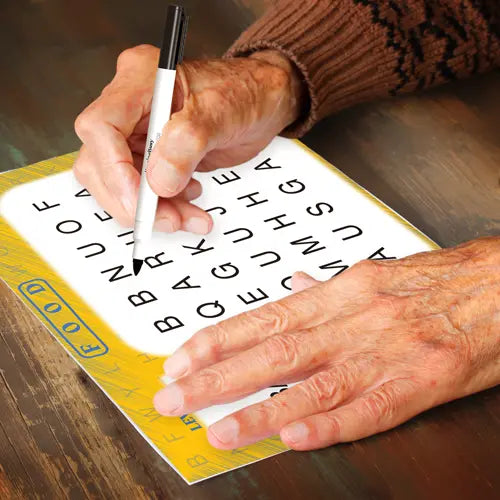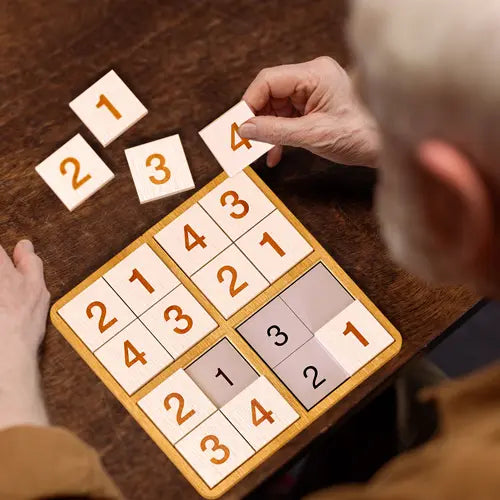
In a previous article we offered suggestions on ways to get your Montessori dementia program going ("Montessori Quickstart"). Since then, we have had a couple of interesting discussions with people about the problem.
One person thought that rather than concentrate on dementia specific small group programming for dementia and Alzheimer's patients as we suggested, maybe it would be better to offer more training to recreation staff on providing individualized one-on-one activities and provide them with the necessary materials. She suggested that with 100 residents and 3 dementia team staff working four 8 hour days each, each dementia resident could receive individualized attention.
When I first read the idea, I thought - exactly! Then I sat down with my calculator. How much engagement could really be offered? Starting with the 8 hour day, at the minimum we need:
- 1/2 hour for lunch and 2 fifteen minute breaks
- At least 30 minutes to update resident charts
- At least 30 minutes of prep time - getting activities from storage, preparing them, etc.
That leaves 6 hours (at the most) for actual engagement, and that's not allowing for any other distractions such as talking to family, communicating with other team members and all of the other things that tend to interrupt the day. And all of this assumes that there is a manager who is looking after preparing the monthly calendar, dealing with administrative tasks and so on.
So we're left with three staff with 6 hours a day for the four days a week that they work. That works out to 72 hours between them to engage residents (3 staff times 4 days times 6 hours per day). With 100 dementia residents, that amounts to 43 minutes of engagement per week, perhaps two 20 minute sessions. That hardly seems ideal, does it? If, on the other hand, some of this time was spent in small group activities of four to six residents, the level of engagement would be much higher.
Unfortunately there are some challenges:
- The biggest issue is that it is a wholesale change for recreation staff. It requires them to have a different mindset which may take them outside their comfort zone. There needs to be a “motivator” to oversee and encourage the process.
- Rather than the traditional approach of starting with a program and adding the residents, effective small group programming means developing a program that meet the needs of a few residents with common goals.
- Understanding that bigger is not better – if the objective is viewed as including residents in x number of dementia programs every week, then big groups appear to be the most efficient way to go. However, they are not the most effective, particularly for people with dementia. In a small group setting there is more opportunity for residents who have difficulties communicating to connect with other residents and they are encouraged to be actively engaged. In addition to the specific benefits of the program, over time they will have a sense of belonging, being involved in something worthwhile and feel that they have a place/role.
- Doing the same thing, in the same way, week after week is a good thing for people for dementia, but it is a different approach for most recreation professionals. Recreation staff tend to be experts at “mixing it up” and adding variety and spice to keep things interesting. This works well for mild cognitive impairment or early dementia but it is the opposite of what is needed by people in mid-stage dementia.
I'm certainly not suggesting that we drop one-on-one activities altogether, far from it. I'm simply pointing out that by incorporating small group dementia programming into the schedule, more residents can be engaged in meaningful activity with the fixed resources.




